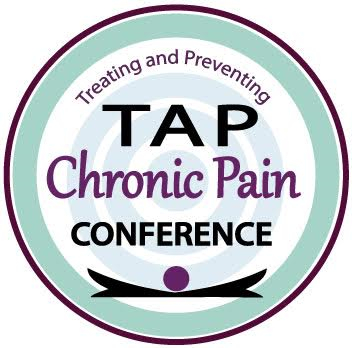The International Myopain Society (IMS) and the and the National Fibromyalgia and Chronic Pain Association have initiated the People’s Campaign for Preventing Chronic Pain to support helping every person who has or will have chronic pain learn to prevent the pain, disability, and other devastating effects. and, in the process, start a revolution in health care.
This campaign is designed to help transform the healthcare system by expanding research and education in developing and testing new on-line consumer training tools and innovative patient-centered coach-based treatment strategies. The Campaign encourages all health professionals to adopt a transformative care model — that is: integration of self-management training of patients with evidence-based treatments. Since the Campaign is about people taking charge of their health and healthcare, an Indiegogo crowdfunding platform at to support preventing chronic pain will launch the campaign.
“This Campaign is about changing our whole approach to chronic pain,” explains Dr. James Fricton, a Course Director and Professor at the University of Minnesota, Senior Researcher at HealthPartners Institute for Education and Research, Pain Specialist at the Minnesota Head and Neck Pain Clinic, and currently President of the International Myopain Society, i a IS release. “By training people to make simple lifestyle changes that cause persistent pain, long-term treatment success improves dramatically. Self-management training is an essential component of care. Every health professional needs to integrate it into every treatment plan to achieve transformative care and not just palliative care.”
The International Myopain Society is a nonprofit, international, interdisciplinary health care organization based in the United States to support scientists, physicians, dentists, other health care professionals, and individuals interested in exchanging ideas, conducting research, or learning more about chronic pain from the many health conditions that cause it.
The National Fibromyalgia & Chronic Pain Association unites patients, policy makers, and healthcare, medical and scientific communities to transform lives through visionary support, advocacy, research and education of fibromyalgia and chronic pain illnesses. The organization’s objective is to prevent chronic pain conditions from derailing lives by promoting early diagnosis, driving scientific research for a cure, and facilitating translational research for the THREE A’s of Treatment for fibromyalgia and chronic pain: Appropriate, Accessible, and Affordable.
The People’s Campaign for Preventing Chronic Pain addresses the “big elephant in the room” of health care: chronic pain — a category that includes back pain, headaches, neck pain, jaw pain and other tenacious typres of pain that are the number one reason for seeking health care, the number one cause of disability and addiction, and the number one driver of health care costs, with expenditures associated with diagnosing and treating chronic pain greater than the costs of cancer, heart disease, and diabetes according to the IMS, which also notes that addiction to pain killers leads to more deaths than motor vehicle accidents, and chronic pain costs in the United States alone exceed $500 billion in health care expenditures and lost work annually — equivalent to 25 percent of all health care costs and five percent of the gross domestic product. To say nothing of the personal impacts in terms of suffering, loss of function, disability, depression, and addiction, which are incalculable.
However, despite this toll, and while major efforts are underway to treat and prevent most other major health conditions, preventing chronic pain remains an enigma, overlooked by the public, neglected by the health care system, and generally ignored by the scientific community. Despite chronic pain’s massive societal and personal impact, the plight of chronic pain patients seeking health care is not encouraging. The IMF observes that if initial efforts for improving pain fail, as they frequently do, care often escalates to higher-cost higher-risk passive interventions such as ongoing opioid analgesics, polypharmacy, implantable devices, injections, physical therapies, and surgeries. However, dismally, most people with chronic pain after 30 days still have pain five years later despite extensive passive treatments.
Why is preventing chronic pain so difficult? The IMF says most research suggests that the presence risk factors that are under more under patients’ control such as repetitive strain, depression, poor sleep, stress, maladaptive postures, and ergonomic factors are the major causes of delayed recovery and failed treatment. Despite that fact that these risk factors can be improved with self-management strategies, they are not often addressed in routine pain care resulting in pain persisting for years.
Passive treatments such as medication, physical therapies, surgery and implants continue to be the dominant care strategy employed by health professionals since these sorts of therapy are better reimbursed, easier to implement, and less time-consuming than teaching patients self-management skills. Thus, chronic pain has become the major health care problem, and the IMF contends that if we really want to reform health care, we must focus on preventing chronic pain by engaging, empowering, and educating patients in reducing the risk factors and enhancing the protective factors to prevent chronic pain.
To improve the chronic pain problem, the IMF says the focus needs to be shifted to concentrate on prevention and early intervention of chronic pain, and that in order to do so, we need a broader conceptual model, shifting paradigms of care, new strategies for care delivery, and better ways to train patients. The IMF maintains that a human systems approach provides a broader understanding of the role of diverse lifestyle risk factors and protective factors in perpetuating chronic pain through recursive feedback cycles that increase peripheral and central sensitization.
The IMF contends that a broader conceptual basis is also required to improve chronic pain among the vast majority of patients, noting that many concepts are included in human systems approach including risk and protective factors in the seven realms, neuro-plasticity, positive psychology, cybernetics, chaos theory, and cognitive-behavioral approaches. Human Systems Theory (HST) stems from research in general system theory and originated in ecology out of the need to explain the inter-relatedness of organisms in ecosystems, and while conventional biological theories view the subject as a single entity, HST views a person as a whole with an inter-relationship between the sub parts of their life. These sub parts are not static” but rather are dynamic, evolving, and interrelated processes.
The IMF observes that a transformative care model for preventing chronic pain amounts to a rare “win-win-win” for patients, health care professionals, and business. A win for patients who achieve success in improving chronic pain, health, and wellness. A win for health professionals in improving outcomes of care by providing patients with more care options that integrate self-management training with bio-medical treatments, and a win for businesses. deriving from lower health care costs and increased productivity through decreasing work loss and disability due to chronic pain.
This triple win is the goal of the Peoples Campaign for Preventing Chronic pain. The Campaign is about the people: Helping each and every person who has or will have chronic pain prevent it.
The global People’s Campaign for Preventing Chronic Pain has three goals:
1. Expand education of both patients and health professionals on how to prevent chronic pain using a transformative care model and employ it with each patient with on-line Training Tool-kits to educate consumers, patients, employees, and health professionals and transform healthcare so that every person learns how to prevent chronic pain, and through creative, interactive and engaging web-based training programs for patients and how to do it. Certification workshops for health professionals are being developed as part of this campaign to implement transformative care model in every community.
2. Expand research research and development on preventing chronic pain with development of the Chronic Pain Research Network as well as strategies and tools such as Research Toolkits that health professionals can use to identify causes of chronic pain and ways improve their prevention and early management of chronic pain conditions, and to connect health professionals with patients and researchers to better understand causes and treatments for chronic pain.
3. Expand advocacy to increase awareness of the importance of preventing chronic pain by health plans, businesses, government agencies, and communities with Media Toolkits to spread the word about the importance of preventing chronic pain and how we can transform health care for all, and by asking people and businesses to take the Chronic Pain Challenge and tell their story of how they prevented chronic pain and how both individuals and groups can work together to solve the big elephant in the room of health care.
The People’s Campaign for Preventing Chronic Pain provides engaging personalized on-line training toolkits for individuals, health professionals, and employers as a Perk for contributing, and available to help everyone learn how to prevent chronic pain. The organizers say initial results show 93 percent of participants in the on-line training believed it changed their life.
 The National Fibromyalgia & Chronic Pain Association and the International Myopain Society have also collaborated to create the Inaugural TAP Chronic Pain Conference to be held October 8 – 10, 2015 at the Crystal Gateway Marriott Hotel in Arlington, Virginia. The conference has been designed to offer an outstanding two day program focused on educating both health professionals and people with fibromyalgia or other pain conditions in how to treat and prevent these conditions, and providing helpful resources, scientific research and treatment options.
The National Fibromyalgia & Chronic Pain Association and the International Myopain Society have also collaborated to create the Inaugural TAP Chronic Pain Conference to be held October 8 – 10, 2015 at the Crystal Gateway Marriott Hotel in Arlington, Virginia. The conference has been designed to offer an outstanding two day program focused on educating both health professionals and people with fibromyalgia or other pain conditions in how to treat and prevent these conditions, and providing helpful resources, scientific research and treatment options.
The program is specifically designed to educate health care professionals about how to prevent chronic pain; how to identify and treat myofascial pain and how to incorporate integrative medicine into treatment regimens for fibromyalgia and chronic pain patients. For people affected by these conditions the TAP Conference is an opportunity to learn more about science, integrative medicine and self-management of fibromyalgia and chronic pain. On a social level the conference offers opportunities for both health professionals and patients to converse about these topics and to learn from experts in this field of medicine.
The conference kicks-off with the President’s Reception on the evening of Thursday, October 8, from 5:00 PM to 7:00 PM. The reception will offer TAP attendees the chance to re-connect with friends, meet conference speakers, and begin this valuable learning and sharing experience.
 Conference highlights include a Key Note Address by Daniel Clauw, MD, a Professor of Anesthesiology, Medicine (Rheumatology) and Psychiatry at the University of Michigan, who also serves as Director of the Chronic Pain and Fatigue Research Center. Dr. Clauw is a world renowned fibromyalgia and chronic pain researcher. He will talk about the state of fibromyalgia and chronic pain research and discuss its implications for patients and health professionals.
Conference highlights include a Key Note Address by Daniel Clauw, MD, a Professor of Anesthesiology, Medicine (Rheumatology) and Psychiatry at the University of Michigan, who also serves as Director of the Chronic Pain and Fatigue Research Center. Dr. Clauw is a world renowned fibromyalgia and chronic pain researcher. He will talk about the state of fibromyalgia and chronic pain research and discuss its implications for patients and health professionals.
 Speaker at a Friday Night Dinner is Dr. Lynn Webster, MD, vice president of Scientific Affairs of PRA Health Sciences, past president of the American Academy of Pain Medicine, and author of the Painful Truth — an intimate collection of stories about people living with disabling pain, their attempts to heal, and the challenges that we collectively face in helping them live meaningful lives. As a physician who has treated people with chronic pain for more than thirty years, Dr. Webster reveals the difficulties that patients face in dealing with chronic pain in a society that is often shamefully prejudiced against those who are most in need of our empathy, and will share shares how such biases also affect medical professionals who treat patients with chronic pain.
Speaker at a Friday Night Dinner is Dr. Lynn Webster, MD, vice president of Scientific Affairs of PRA Health Sciences, past president of the American Academy of Pain Medicine, and author of the Painful Truth — an intimate collection of stories about people living with disabling pain, their attempts to heal, and the challenges that we collectively face in helping them live meaningful lives. As a physician who has treated people with chronic pain for more than thirty years, Dr. Webster reveals the difficulties that patients face in dealing with chronic pain in a society that is often shamefully prejudiced against those who are most in need of our empathy, and will share shares how such biases also affect medical professionals who treat patients with chronic pain.
TAP Chronic Pain Conference health care professional educational opportunities include:
1. Self-management : One area lacking in treating chronic pain and fibromyalgia symptoms is the lack of knowledge by HCPs regarding self-management approaches of treatment for these conditions. The Conference program offers several presentations regarding this information which will identify different self-management approaches for clinicians to share with patients.
2. Integrative medicine: Many clinicians know that integrative medicine paired with an interdisciplinary approach to fibromyalgia and chronic pain symptom management has been shown to be an important component in successful treatment protocols for these patients. But, clinicians do not know how to incorporate these treatments into a successful treatment regimen for patients. There are several presentations regarding these elements, including cognitive behavior therapy, mindfulness, myofascial pain therapies, yoga, occupational therapy approaches and physical therapy treatments.
3. Sleep and fibromyalgia: One of the least known avenues in helping people with fibromyalgia for general practice clinicians is what to do about sleep issues in these patients. In fibromyalgia symptomology, sleep anomalies including sleep apnea and lack of stage IV sleep have been shown to be relevant to the development and perpetuation of symptoms. A recent published study has revealed the possibility of a diagnostic pattern of sleep patterns for fibromyalgia patients. This presentation will address how the lack of sleep and sleep apnea can promote autonomic arousal and how doctors can help their patients by prescribing sleep labs in order to clearly identify specific sleep disorders that can then be treated.
4. Cervical spinal cord compression: Published studies have shown that 80% of patients diagnosed with fibromyalgia also have cervical spinal cord compression, which is generally unknown by most clinicians. This is an issue because fibromyalgia symptoms are so similar to those caused by cervical spinal stenosis, most clinicians never think about pursuing the cause for these neurological abnormalities in tis patient group. A new MRI positional cervical cord compression protocol has been developed that more easily identifies this issue. This has resulted in an effective physical therapy program for these patients. There will be presentations and workshops addressing these issues.
5. The significance of myofascial pain: 100% of fibromyalgia patients and a large percentage of chronic pain patients also suffer with myofascial pain. Because so little is generally known about myofascial pain and relevant treatment protocols, most clinicians miss this diagnosis. It has been shown that by addressing myofascial pain including trigger point release a significant benefit can be obtained for the patient. Several presentations will cover how to identify myofascial pain and treatments. Including myofascial pain self-management techniques.
6. Unintended Consequences of Hydrocodone Rescheduling : Because of DEA and FDA regulations, patients who should have the right to opioid prescription medications are being denied adequate pain control for their chronic pain conditions. A presentation will be made regarding responses of a patient survey completed by 7900 people about this issue and the rise in suicidal ideation caused by unaddressed withdrawal symptoms and increased pain.
7. Small Fiber Neuropathy in Fibromyalgia: Researcher, Dr. Frank Rice, will share his work with health care professionals including updates regarding ongoing research in this area of science.
8. Preventing Chronic Pain Campaign: The idea of preventing chronic pain is new and most clinicians do not know where to begin in addressing this issue. The University of Minnesota’s Preventing Chronic Pain Campaign educates practitioners regarding the steps necessary to solve this problem. Dr. James Fricton, will share information from his course on this subject.
Saturday afternoon is reserved for a variety of workshops delving further into the topics listed above and giving health professionals opportunities to learn about:
• Hands-on techniques in myofascial release
• Trigger point imaging before and after treatment
• Positional cervical cord compression physical therapy techniques
• A non-invasive rehabilitation program for people with fibromyalgia
• The MindfulHealth System: Using Online Personal Informatics to Reduce Symptoms in FM and Other Chronic Pain Conditions.
• Preventing Chronic Pain Campaign: This workshop gives clinicians the initial information and tools they need to begin making changes in their approach to preventing chronic pain.
More information on the People’s Campaign for Preventing Chronic Pain is available at:
http://igg.me/at/preventingpain and http://www.preventingchronicpain.org; and on Facebook at http://www.facebook.com/preventingchronicpain and Twitter at @prevent_pain
You can register for the TAP Chronic Pain Conference and sign up for Saturday afternoon workshops at;
https://myopain.formstack.com/f\orms/untitled_form_1
Tickets are $295.00.
Hotel reservations can be booked by calling the Crystal Gateway Marriott Hotel, 1700 Jefferson Davis Hwy., Arlington, VA at 1-877-212-5752 Ask for the TAP Chronic Pain Conference room rate of $135.00 per night plus taxes. You can also make reservations online at: https://resweb.passkey.com/Resweb.do?mode=welcome_ei_new&eventID=13933532
Sources:
International Myopain Society
National Fibromyalgia and Chronic Pain Association
People’s Campaign for Preventing Chronic Pain
TAP Chronic Pain Conference
Image Credits:
International Myopain Society
Minnesota Head and Neck Pain Clinic
University Of Michigan
TAP Chronic Pain Conference

